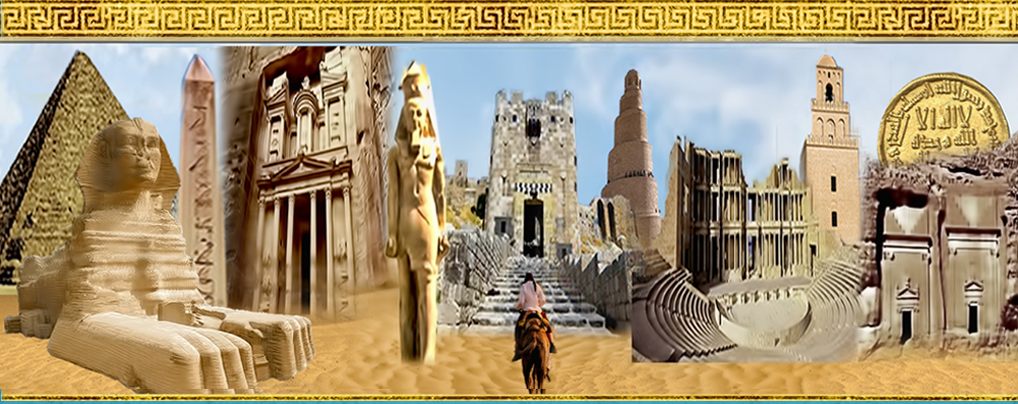Journal of the General Union of Arab Archaeologists

Abstract
تقييم علاج وصيانة الواجهات الرئيسية لمعبد مدينة هابو، الآقصر – مصر [Ar]
تُركز هذه الورقة على المخاطر البيئية التي تؤثر على النقوش الجدارية بالواجهات الرئيسية للمعبد الجنائزي لرمسيس الثالث بالضفة الغربية للأقصر مع اقتراح أفضل المواد لحفظ هذه النقوش. لتحقيق هذا الغرض، تمت دراسة مواد البناء المستخدمة في المعبد، ونواتج التلف، والعوامل البيئية المحيطة. تم تحديد خصائص المواد من خلال الفحص البصرى، والميكروسكوب المستقطب، والميكروسكوب الإلكترونى الماسح المزود بوحدة التحليل العنصرى للأشعة السينية، وحيود الأشعة السينية (XRD)، وقياس التغيرات اللونية، وقياس زاوية التلامس مع الماء الثابت، مع تحديد بعض الخصائص الفيزيائية والميكانيكية. أظهرت النتائج أن النقوش الجدارية على الواجهات الرئيسية للمعبد في حالة خطيرة من الحفظ، حيث تأثرت بكثير من مظاهر وأنماط التلف مثل التقشر، والانفصال، والتحول إلى مسحوق، والتغير اللونى، وأنواع متعددة من الشروخ، وتراكم رواسب سطحية، والتفتت، وتزهرالأملاح، وأنواع مختلفة من الأضرار الميكانيكية المتعمدة مثل علامات التبرك (شحذ السكين)، والفجوات على مساحات واسعة وفي الكتل السفلية، والعديد من الحلقات التي تم نحتها فى العصور الوسطى حتى القرن الماضى لتأمين الحيوانات. وأظهرت النتائج التي تم الحصول عليها من دراسة الحجر الرملي الأثري بطرق الفحص والتحليل أنه يتكون بشكل أساسي من الكوارتز وكميات قليلة من الكاولين والكالسيت والهاليت مع كمية نادرة من الفلسبار والبيوتايت والزركون وأكاسيد الحديد ومعادن معتمة.
[En] This paper focuses on the environmental hazards affecting the wall reliefs at the main facades of the mortuary temple of Ramesses III at Luxor west bank, abreast with proposing the optimum materials to conserve these inscriptions. To achieve the aforementioned purpose; the building materials used in the structure, the deterioration products, and ambient environmental factors were studied. The materials were characterized by visual observations, polarized light microscope, scanning electron microscopy with energy dispersive X-ray spectroscopy (SEM-EDX), X-ray diffraction (XRD), colorimetric measurements, and static water contact angle, with some physical and mechanical properties. The results revealed that the wall reliefs on the main facades of the temple are in a serious preservation state, where affected by several deterioration phenomena and patterns of damage such as scaling, flaking, powdering, discoloration, multiple types of cracks, surface deposits, fragmentation, efflorescence of salts, the different types of intentional mechanical damage such as, blessing marks (knife whetting), gaps over wide areas, and on the lower blocks, there are many loops, which were carved from the middle ages until the last century for securing animals. The results obtained from studying archeological sandstone by investigation and analytical methods revealed that it consists mainly of quartz, minor amounts of kaolinite, calcite and halite with rare amount of feldspars, biotite, zircon, iron oxides, and opaques.
Recommended Citation
Manci, Ahmed
(2023)
"ASSESSING CONSERVATION TREATMENTS OF THE MAIN FAÇADES OF MEDINET HABU TEMPLE, LUXOR–EGYPT,"
Journal of the General Union of Arab Archaeologists: Vol. 8:
Iss.
2, Article 8.
Available at:
https://digitalcommons.aaru.edu.jo/jguaa/vol8/iss2/8
Included in
Historic Preservation and Conservation Commons, History Commons, History of Art, Architecture, and Archaeology Commons

